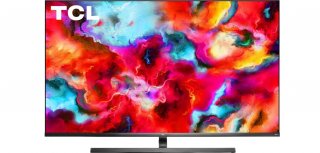So Long, LG and Samsung: Why You Should Avoid Buying OLED AND QLED TVs
In today’s TV universe, it really is a two-person race between Korean companies LG and Samsung. LG boasts unrivaled picture quality with its OLED HDTV offerings, and Samsung touts amazing pictures in its own right at cheaper prices with its QLED HDTVs. But as a consumer, do you really have to make a selection between only these two products? No, you don’t.
In today’s TV universe, it really is a two-person race between Korean companies LG and Samsung. LG boasts unrivaled picture quality with its OLED HDTV offerings, and Samsung touts amazing pictures in its own right at cheaper prices with its QLED HDTVs.
But as a consumer, do you really have to make a selection between only these two products? No, you don’t.
If you can broaden your view just a bit, you will see that there are other wonderful, inexpensive options out there. Sure, no other TV will beat LG’s OLEDs in terms of picture quality, but keep in mind that you’ll also be spending north of $2K on one of these devices. And for Samsung’s QLEDs, you’ll likely only save a few hundred bucks and receive slightly less quality than what OLEDs can give you.
Be aware that OLEDs and QLEDs do have problems of their own. OLED TVs are often criticized for being susceptible to image retention and burn-in. Although rare, the fact of the matter is that burn-in is permanent, possibly flushing down the drain thousands of dollars that you committed to purchasing this TV.
As for QLEDs, these are basically LCD TVs with quantum dots, which are microscopic particles that when hit by light, emit a certain different colored light. The source of this light is the LED backlight, and that light must pass through more layers, such as the LCD layer, to produce the images on the screen.
For the most part, LCD tech is pretty ancient and naturally have limitations, such as below-average wide-angle viewing. As with all LCD-based displays, different areas of the screen can often appear brighter than others, and the backlighting can at times bleed through. When viewed at a side, the LCD layer has a certain thickness that can block some of the light coming through, and this is more pronounced at extreme angles.
So, what’s the TV consumer left with? Well, if you’re looking to spend only half of what you would normally shell out for a QLED TV, be sure to check out TCL’s 4- and 5-Series. With a hundred-dollar difference between the two and at under $400, you really can’t go wrong here.
Even at these bargain-bin price points, you’ll get a 4K TV with solid picture quality, wide color gamut, low input lag and great response and processing time. The contrast ratio and black levels and uniformity have also been highly praised—just not at those much-vaunted OLED levels.
Perhaps, best of all, if you’re one of the millions who love Roku, you’re definitely in luck as most of TCL’s smart TVs come with it. Because of its incredibly intuitive interface, it really is a breeze in quickly finding what you want to pick for family movie night. Moreover, the streaming offerings in Roku are seemingly endless.
Ethen Kim Lieser is a Science and Tech Editor who has held posts at Google, The Korea Herald, Lincoln Journal Star, AsianWeek and Arirang TV. He currently resides in Minneapolis.

